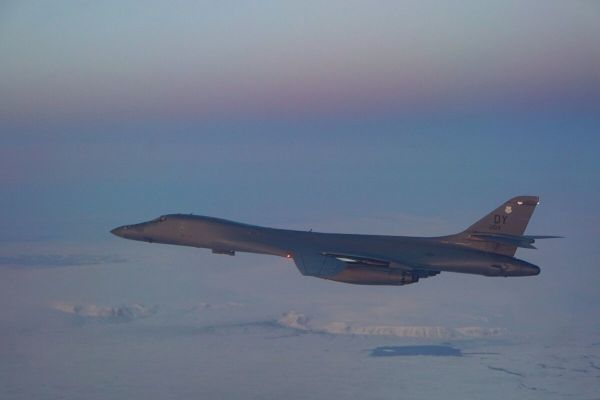February 7th that the U.S. Air Force will deploy B-1B strategic bombers and subsidiary logistics units to a base in Norway for the first time, highlighting the Arctic U.S. defense strategy. It is of increasing importance. The full text is excerpted as follows:
More than 200 U.S. Air Force personnel from Dyce Air Force Base, Texas, are expected to accompany a B-1B “gun cavalry” bomber squadron to Åland Air Force Base in Norway to support the mission of the U.S. military and allies in the area, the U.S. European Command said in a statement on the 2nd local time.
The U.S. European Command did not specify when these U.S. Air Force personnel and B-1 bombers will arrive at Åland Air Force Base and how long they will be deployed there.
Åland Air Force Base is located on the west coast of Norway, where the Norwegian Air Force deploys F-35A Lightning II stealth fighters.
The statement said that these U.S. Air Force personnel “will participate in advance teams for established tasks that will be completed within a limited time in the next few weeks”.
The U.S. Air Force announced a new Arctic defense strategy in July 2020, focusing on strengthening its military presence in the region and responding to threats from Russia.
While at Åland Air Force Base, these U.S. Air Force personnel will operate in the Arctic and cooperate with allies and partners in the European Theater of War.
Jeff Harrigian, the commander of the U.S. Air Force in Europe and Africa, said in a statement: “The ability to maintain readiness and support and respond quickly to allies and partners is essential to our common success.
We value a long-term partnership with Norway and look forward to future opportunities to strengthen our common defenses.”
A spokesman for the U.S. Air Force Command in Europe and Africa said on the 2nd local time that this was the first time that the U.S. military had deployed strategic bombers to Norway.
During the peak of the Cold War, U.S. strategic bombers often haunted the region.
Although bombers such as the B-52 and F-111 were stationed in neighboring Britain, they could not use Norwegian air bases or even participate in exercises at that time, because the Oslo government banned allied military aircraft with “nuclear capabilities” (launching nuclear weapons, note on this website) from using their territory.
Until the mid-1990s, the B-1B long-range bomber had “nuclear capability”.
Later, the bomber was modified (dismantling nuclear weapons delivery equipment) in accordance with the provisions of the US-Soviet Treaty on Limitation of Nuclear Weapons to carry out routine bombing missions.
The B-1B “Langer” supersonic strategic bomber nicknamed “Bone” has been in the United States Air Force since 1985. Compilation/Guo Jun)



